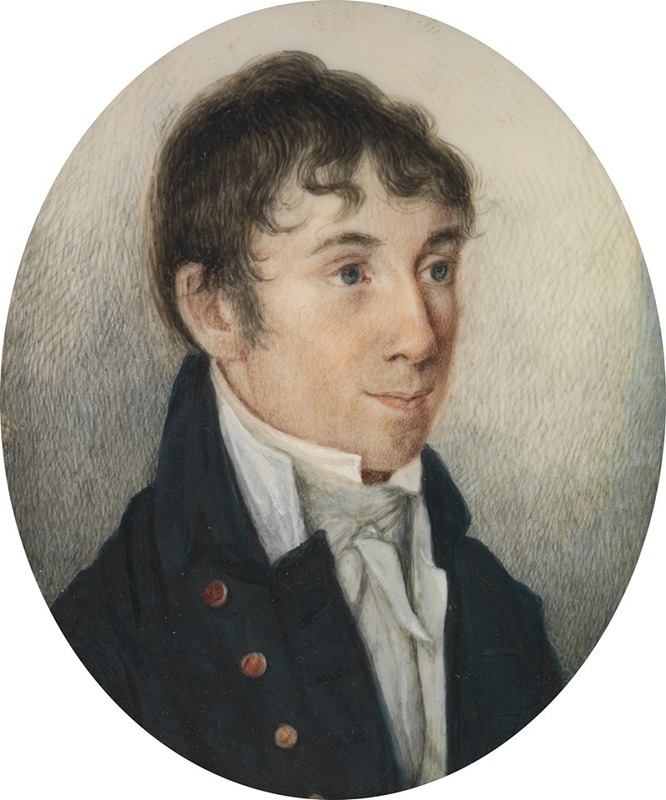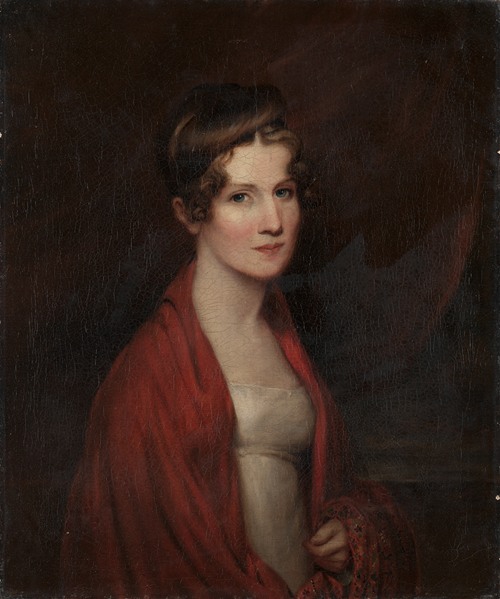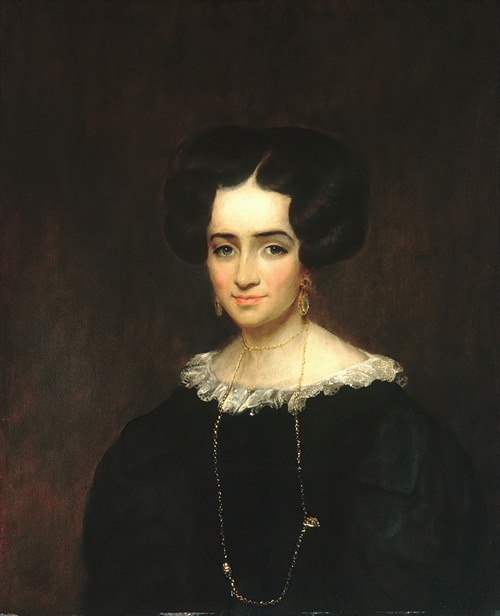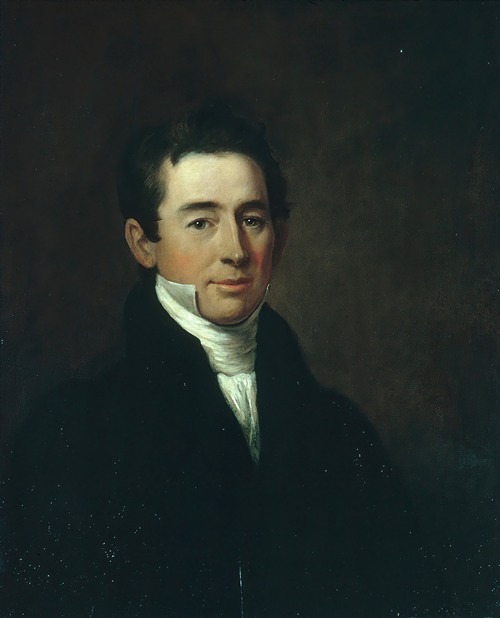

Born in Perth Amboy, New Jersey, in 1766, William Dunlap was the son of Samuel Dunlap and his wife Margaret Sargeant. He is best remembered as the first historian of American art and also as an historian and critic of the American theater. However, Dunlap was also active as a painter, playwright, and theatrical manager, as his personal finances dictated.
Although his formal schooling ended at age twelve when an injury left him blind in the right eye, Dunlap soon developed an interest in drawing and began copying prints and executing portraits in pastel. At sixteen he began painting portraits in oil, and two years later he was sent to London to study with Benjamin West. Though the young artist visited many painting collections while in Britain, he admitted that he was easily distracted from his artistic pursuits and that he therefore remained "ignorant of anatomy, perspective, drawing, and colouring, and returned...home a most incapable painter." Nevertheless, after his return to New York City in 1787 Dunlap resumed his portrait painting. He completed his first major canvas in 1788, The Artist Showing a Picture from Hamlet to His Parents, executed in the style of a British conversation piece.
The theater, one of Dunlap's several diversions while studying under West, increasingly occupied his attention in the late 1780s. His play The Father, or American Shandyism was performed at John Street Theatre in New York in 1789. Also in that year Dunlap married Elizabeth Woolsey. The couple later had two children. Until he became bankrupt in 1805 from his dramatic ventures, Dunlap continued working as a playwright and theatrical manager. He then turned again to painting, executing miniatures in Philadelphia, Baltimore, and Washington. By 1806 he was again involved with the New York theater, only relinquishing his work there in 1812.
About 1813, after another brief period devoted to painting miniatures, Dunlap began to work primarily in oil, fulfilling portrait commissions in Virginia, Philadelphia, Washington, Utica, Albany, Boston, Vermont, and Montreal. His painting career was again interrupted briefly, this time from 1814 to 1816, when he served as assistant paymaster general in the New York militia. In the 1820s, imitating his master, West, Dunlap executed large exhibition pictures of religious and historical subjects, some of which were identical in subject and scenic elements to West's own. These paintings, all now unlocated, were exhibited in Eastern cities and in the midwest.
Dunlap exhibited at the American Academy of the Fine Arts in New York from 1816 until his death. He was a member from 1817 to 1828, and keeper, librarian, and a member of the board of directors from 1817 to 1819. In 1826 Dunlap helped found the rival National Academy of Design, where he served as vice president from 1832 to 1838. He exhibited there from 1826 to 1838, and from 1831 to 1838 was the professor of historical composition.
During the last decade of his life Dunlap suffered poverty and illness. Nevertheless, he wrote prolifically, producing two well-known books, The History of the American Theatre (1832) and The History of the Rise and Progress of the Arts of Design in the United States (1834). The first--and still valuable--history of American art, the latter work details the accomplishments of the young nation in critical biographies of its artists. In addition to recounting biographies, Dunlap also touched on such diverse topics as the history of engraving, practical instructions on miniature painting, a survey of American art academies, styles of ancient architecture, and L'Enfant's plan for Washington. Although Dunlaps's own autobiography in this volume rather strictly divides his life into periods of exclusive involvement with either the theater or "the arts of design," there were periods of overlap, and given his frequent career zigzags, it is not surprising that Dunlap combined his two interests and that his style varied greatly over the fifty-odd years of his sporadic painting career. Dunlap died in New York City in 1839.



